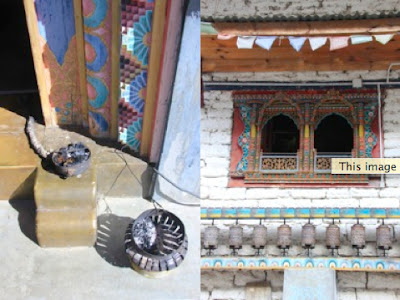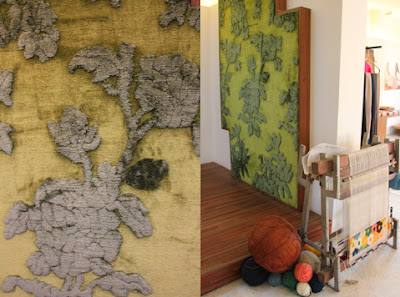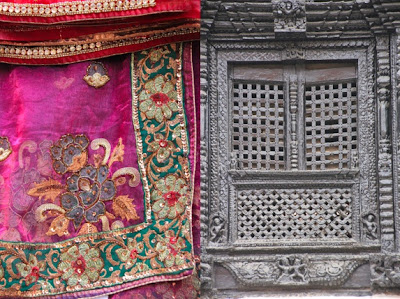 |
| Beautiful brass flower pots at doorways. |
I am now finished trekking in Nepal and so will soon be flying to Mumbai, India.
It's been an interesting few weeks trekking through these extremely remote villages high up in the Himalayas and witnessing first hand how sustainably local people live.
In years past some of these villages were on well established trading routes with China and Tibet. Nowadays a lot of their income comes from trekkers like me staying in local tea house style accommodation whilst trekking from village to village.
Most of these lodges spend the trekking season attending to guests but when the season finishes they turn their attentions to growing produce for the next season either locally or lower down in the foothills.
Hot water for trekkers is mainly solar powered with the odd gas system in the more luxurious lodges. However the locals use the local river or village water supply to wash everything, including themselves… Bear in mind this local water supply is extremely cold. In a few of the village you can also find hot springs which the locals take advantage of... Who can blame them!
 |
| The local village water supply and washing day! |
Food is either grown locally or carried in by porters, donkeys or depending where the village is by aircraft. Needless to say in this cold and harsh climate food variety is limited and if it can be stored it will be, normally in a dry shed at the back of the property or hung out in the sun.
When it comes to waste there is still a massive issue with disposing of it however I did notice some great examples of recycling waste with beer bottles being used as edges to flower beds and old food and paint tins being used as flower pots.
There is also no such thing as electric appliances! Dishes are washed in the local water supply and then left out in the sun to dry. Most stoves are still fuelled by wood which is a problem as it is leading to local deforestation but kerosene stoves are being promoted as a more sustainable alternative.
 |
| A typical, well ordered, lodge kitchen. |
Blankets, rugs and woollen products are provided by the unlucky local Yaks. It is quite a weird experience to sit on a Yak skin!
 |
| A small retail display of local antiques and Yak products! |
 |
| Even Monks have tea breaks! They also offered us a cuppa at 3900m above sea level! |
 |
| Carved timber window and door frames. |
 |
| Prayer wheels, stones carved with prayers and prayer flags. |
This trek is a great experience and it is so nice to see that behind this basic and remote living style the villages still express individuality, creativity and take great pride with decorating their entrances, lodges, monasteries and messages to their Gods!
I am now off to the tiny laneways in Kathmandu to haggle for homewares items to send home.
Have fun.












































